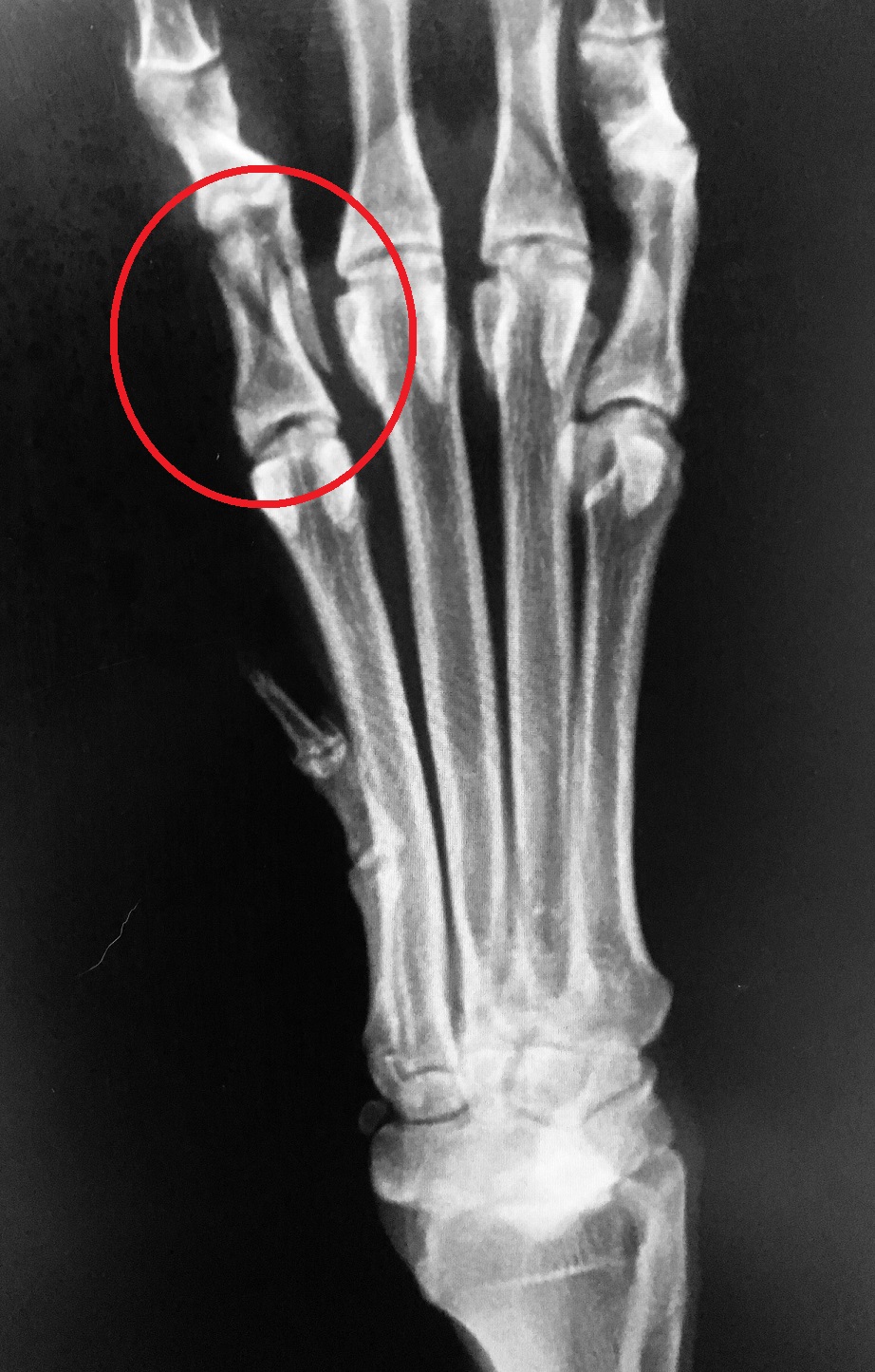If you have ever seen a greyhound run, you know that they are FAST. They tend to bide their energy through lengthy naps, and then when they let that energy out by running, they really go all out! Winter weather seems to bring out enthusiasm in many dogs, who will play in the snow and frolic in winter conditions. But winter weather can make these jaunts dangerous if the events line up in an unfortunate way. For instance, a greyhound with such propensity for speed can have a difficult time slowing down in slippery conditions—and then accidents or injuries can happen, which was the case for Dr. Gerber’s 4 year old greyhound Rooney.
Dr. Gerber had been inside when Rooney’s accident happened, so she didn’t witness what exact event; however, it is easy to imagine how he could have slipped and landed in an awkward way while enjoying the greyhound zoomies around the yard on a January day. When he came back inside, he was holding his right front foot up, and Dr. Gerber noticed one of his toes was swollen and painful to touch. Rooney was brought straight to the vet clinic for x-rays, and the source of his pain was discovered right away:
Rooney had fractured one of the bones in his toe. The broken bone was in his 2nd digit, which was lucky for Rooney because dogs carry most of their weight on their 3rd and 4th digits. This helped make Rooney’s healing process much easier – bones can be challenging to heal when they are being used, but because there was little to no weight bearing on Rooney’s affected toe, it was able to heal without significant intervention.
Rooney was on pain medications and anti-inflammatories for several weeks, and put on strict rest for a month. This means Rooney was only allowed outside to do his business and had to be on-leash even then – no walking, no dog parks, and off-leash playing (definitely no goofing off in the yard!) Even in these “easy” fractures, bones take a long time to heal; healing time can be anywhere from 4-6 weeks up to 3-4 months depending on the size and location of the fracture.
Some dogs with broken toes require stabilization with splints and bandages to help the fracture heal. For Rooney, he just had a simple paw bandage for the first few days to help reduce the swelling; he also had his favourite kitty to act as a nurse and keep him company while on strict rest (it’s said that a cat’s purring has healing properties, after all!). All animals and injuries are unique and the veterinarian will be able to help determine the best course of action for each patient.
With the mix of snow and rain and freezing rain that we see in Nova Scotia, we need to look out for our pets in the winter time – injuries are most often related to slipping, or falling on the ice, and can range from minor soft tissue strains and wounded paw pads to broken bones. Some things owners can do to help prevent injuries are to equip their canine friends with a set of outdoors footwear (booties); these can help protect their pads and give them more grip when walking (or running) on uncertain surfaces. There are also pet-safe salt products that can help thaw out ice and give some traction around our homes. If the ground is slippery for us, the best thing to do is keep our pets off of those areas altogether. Rooney is back to his normal self and doing his best to stay off the ice these days.
- Phone:
- 902-883-8787
- Fax:
- 902-883-8789
